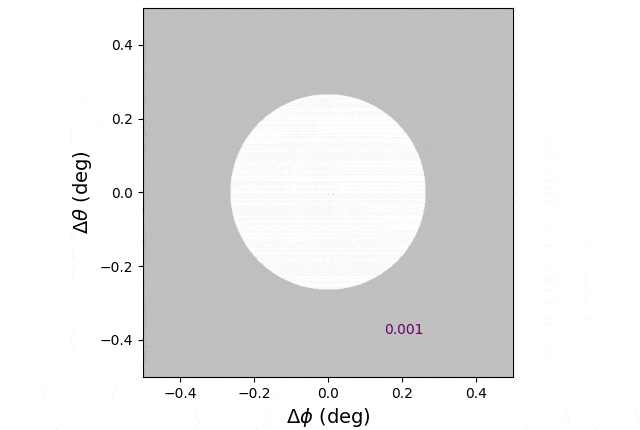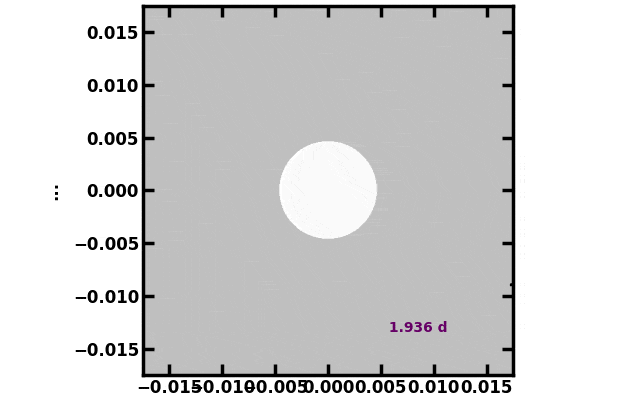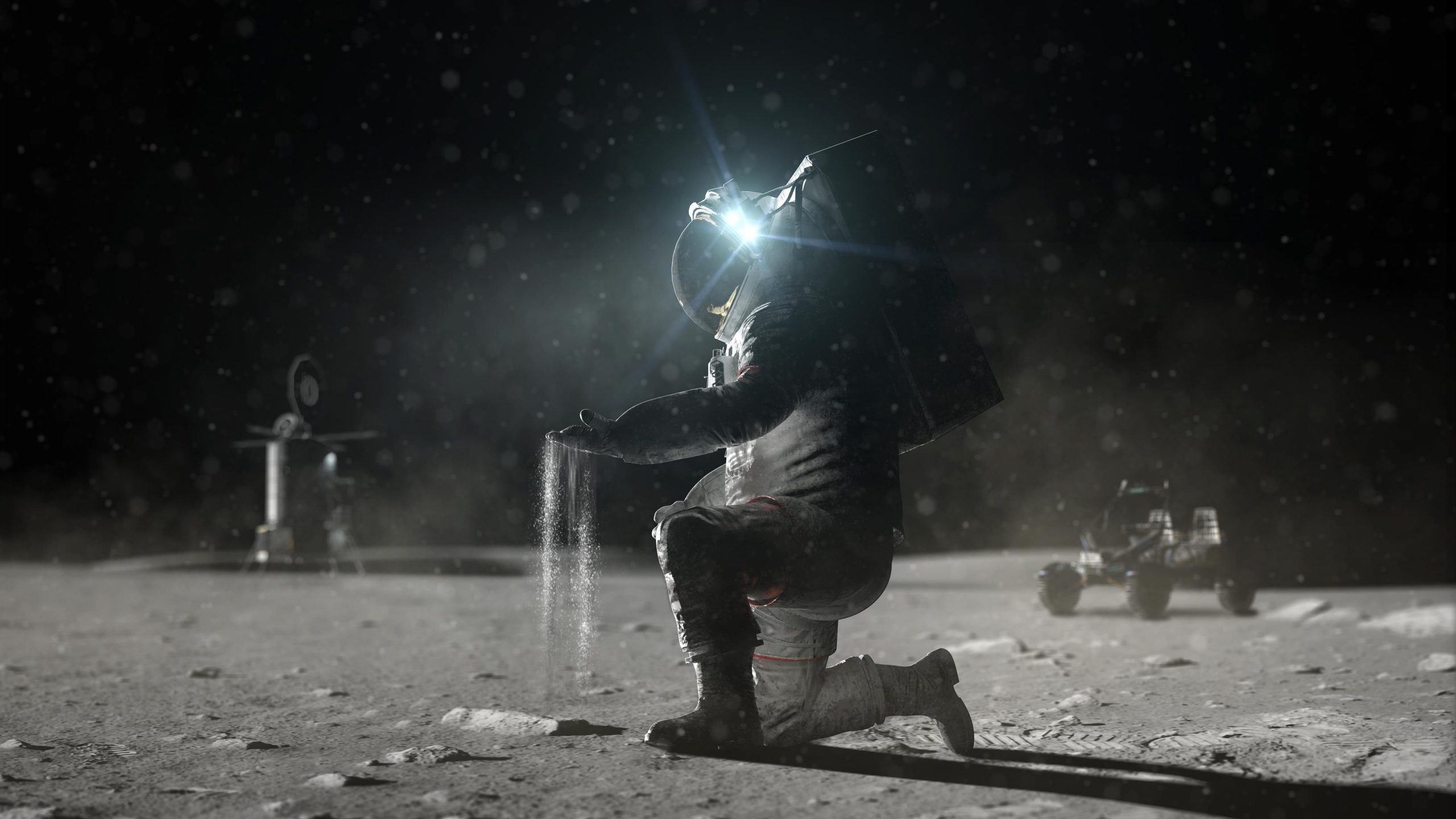
منظر قمري مترب ، كما تصورها مختبر المفاهيم المتقدمة التابع لوكالة ناسا. الائتمان: ناسا
في يوم شتاء بارد ، دفء الشمس مرحب به. ومع ذلك ، مع إطلاق البشرية المزيد والمزيد من غازات الدفيئة ، يحبس الغلاف الجوي للأرض المزيد والمزيد من طاقة الشمس ويزيد درجة حرارة الأرض بشكل مطرد. تتمثل إحدى الإستراتيجيات لعكس هذا الاتجاه في اعتراض جزء من ضوء الشمس قبل وصوله إلى كوكبنا. لعقود من الزمان ، فكر العلماء في استخدام الشاشات أو الأشياء أو جزيئات الغبار لمنع ما يكفي من إشعاع الشمس – بين 1 أو 2٪ – للتخفيف من آثار الاحتباس الحراري.
استكشفت دراسة بقيادة جامعة يوتا إمكانية استخدام الغبار لدرء أشعة الشمس. قاموا بتحليل الخصائص المختلفة لجزيئات الغبار ، وكميات الغبار ، والمدارات الأنسب لتظليل الأرض. وجد المؤلفون أن إطلاق الغبار من الأرض إلى محطة على الطريق في “نقطة لاغرانج” بين الأرض والشمس (L1) سيكون أكثر فاعلية ولكنه سيتطلب تكلفة فلكية وجهدًا. البديل هو استخدام moondust. يجادل المؤلفون بأن إطلاق الغبار القمري من القمر يمكن أن يكون وسيلة رخيصة وفعالة لتظليل الأرض.

إطلاق محاكاة لتيار من الغبار بين الأرض والشمس. تظهر سحابة الغبار هذه أثناء عبورها قرص الشمس ، من الأرض. يمكن أن تكون تيارات مثل هذه ، بما في ذلك تلك التي يتم إطلاقها من سطح القمر ، بمثابة مظلة مؤقتة للشمس. الائتمان: بن بروملي / جامعة يوتا
طبق فريق علماء الفلك تقنية مستخدمة لدراسة تكوين الكواكب حول النجوم البعيدة ، وهو تركيزهم البحثي المعتاد. تشكل الكوكب عملية فوضوية تؤدي إلى إطلاق الكثير من الغبار الفلكي الذي يمكن أن يشكل حلقات حول النجم المضيف. تعترض هذه الحلقات الضوء القادم من النجم المركزي وتعيد إشعاعه بطريقة يمكننا من خلالها اكتشافه على الأرض. تتمثل إحدى طرق اكتشاف النجوم التي تشكل كواكب جديدة في البحث عن هذه الحلقات المتربة.
“كانت تلك بذرة الفكرة. قال بن بروملي ، أستاذ الفيزياء و علم الفلك والمؤلف الرئيسي للدراسة.

محاكاة من الغبار المنطلق من محطة الطريق عند نقطة لاغرانج 1. إن الظل الملقي على الأرض مبالغ فيه من أجل الوضوح. الائتمان: بن بروملي
قال سكوت كينيون ، المؤلف المشارك لـ دراسة من مركز الفيزياء الفلكية | هارفارد وسميثسونيان.
تم نشر الورقة مؤخرًا في المجلة المناخ PLOS.
إلقاء الظل
تعتمد الفعالية الإجمالية للدرع على قدرته على الحفاظ على مدار يلقي بظلاله على الأرض. قاد سمير خان ، الطالب الجامعي والمؤلف المشارك للدراسة ، الاستكشاف الأولي الذي يمكن أن تحبس فيه المدارات الغبار في موضعه لفترة كافية لتوفير تظليل مناسب. أظهر عمل خان صعوبة حفظ الغبار في المكان الذي تريده.
قال خان: “لأننا نعرف مواقع وكتل الأجرام السماوية الرئيسية في نظامنا الشمسي ، يمكننا ببساطة استخدام قوانين الجاذبية لتتبع موقع محاكاة درع الشمس بمرور الوقت لعدة مدارات مختلفة”.
كان هناك سيناريوهان واعدان. في السيناريو الأول ، وضع المؤلفون منصة فضائية عند نقطة L1 Lagrange ، وهي أقرب نقطة بين الأرض والشمس حيث تتوازن قوى الجاذبية. تميل الأجسام الموجودة في نقاط لاغرانج إلى البقاء على طول مسار بين جرمين سماويين ، وهذا هو السبب في أن[{” attribute=””>James Webb Space Telescope (JWST) is located at L2, a Lagrange point on the opposite side of the Earth.

A simulation of dust launched from the moon’s surface as seen from Earth. Credit: Ben Bromley
In computer simulations, the researchers shot test particles along the L1 orbit, including the position of Earth, the sun, the moon, and other solar system planets, and tracked where the particles scattered. The authors found that when launched precisely, the dust would follow a path between Earth and the sun, effectively creating shade, at least for a while. Unlike the 13,000-pound JWST, the dust was easily blown off course by the solar winds, radiation, and gravity within the solar system. Any L1 platform would need to create an endless supply of new dust batches to blast into orbit every few days after the initial spray dissipates.
“It was rather difficult to get the shield to stay at L1 long enough to cast a meaningful shadow. This shouldn’t come as a surprise, though, since L1 is an unstable equilibrium point. Even the slightest deviation in the sunshield’s orbit can cause it to rapidly drift out of place, so our simulations had to be extremely precise,” Khan said.
In the second scenario, the authors shot lunar dust from the surface of the moon towards the sun. They found that the inherent properties of lunar dust were just right to effectively work as a sun shield. The simulations tested how lunar dust scattered along various courses until they found excellent trajectories aimed toward L1 that served as an effective sun shield. These results are welcome news, because much less energy is needed to launch dust from the moon than from Earth. This is important because the amount of dust in a solar shield is large, comparable to the output of a big mining operation here on Earth. Furthermore, the discovery of the new sun-shielding trajectories means delivering the lunar dust to a separate platform at L1 may not be necessary.
Just a moonshot?
The authors stress that this study only explores the potential impact of this strategy, rather than evaluate whether these scenarios are logistically feasible.
“We aren’t experts in climate change, or the rocket science needed to move mass from one place to the other. We’re just exploring different kinds of dust on a variety of orbits to see how effective this approach might be. We do not want to miss a game changer for such a critical problem,” said Bromley.
One of the biggest logistical challenges—replenishing dust streams every few days—also has an advantage. Eventually, the sun’s radiation disperses the dust particles throughout the solar system; the sun shield is temporary and shield particles do not fall onto Earth. The authors assure that their approach would not create a permanently cold, uninhabitable planet, as in the science fiction story, “Snowpiercer.”
“Our strategy could be an option in addressing climate change,” said Bromley, “if what we need is more time.”
Reference: “Dust as a solar shield” by Benjamin C. Bromley, Sameer H. Khan and Scott J. Kenyon, 8 February 2023, PLOS Climate.
DOI: 10.1371/journal.pclm.0000133

“هواة الإنترنت المتواضعين بشكل يثير الغضب. مثيري الشغب فخور. عاشق الويب. رجل أعمال. محامي الموسيقى الحائز على جوائز.”





